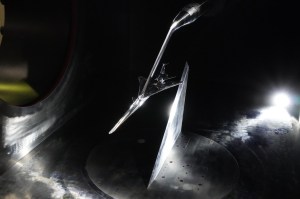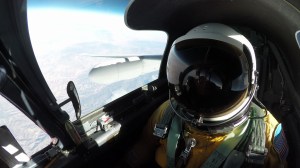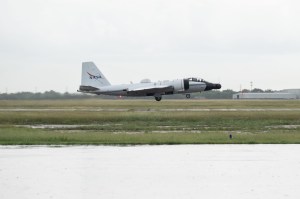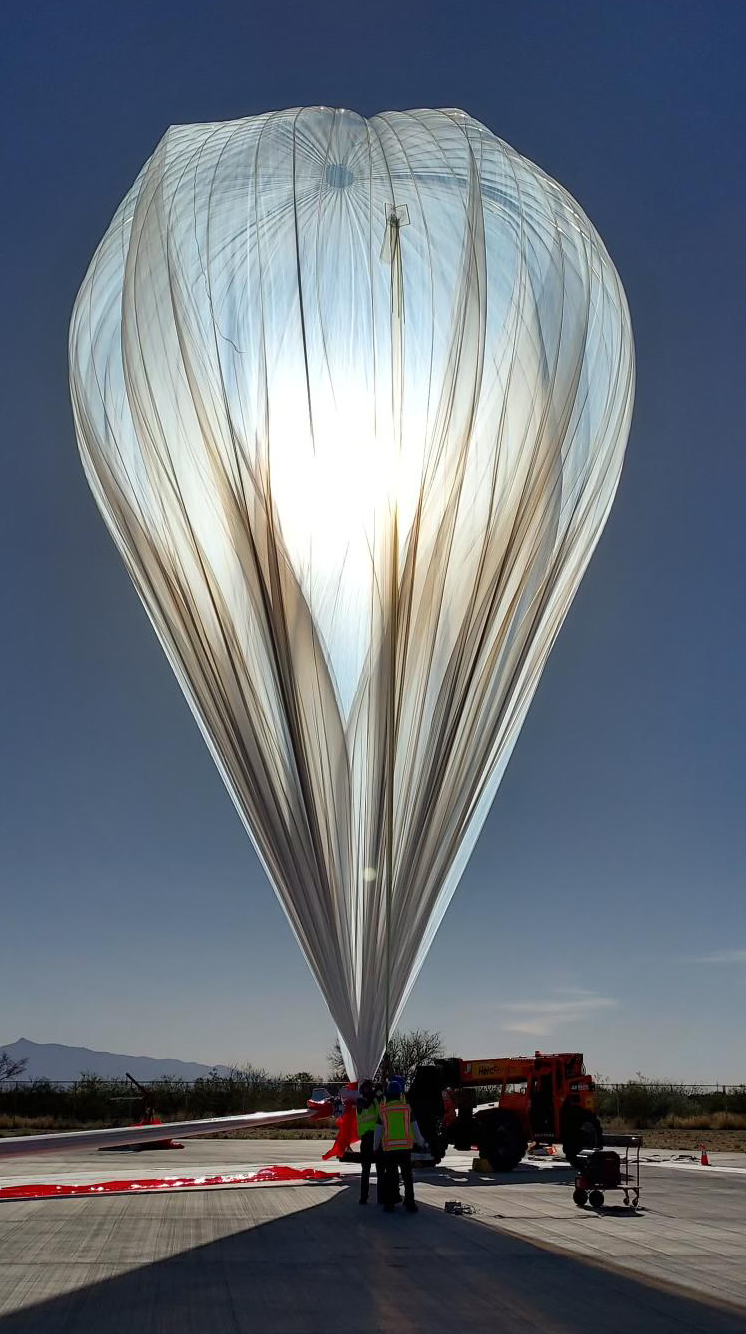NASA operates a highly modified Douglas DC-8 jetliner as a flying science laboratory. The aircraft is based at NASA’s Armstrong Flight Research Center Building 703 in Palmdale, California and is used to collect data for experiments in support of projects serving the world’s scientific community. Federal, state, academic, and foreign researchers are among those who use NASA’s DC-8.
Data gathered with the aircraft at flight altitude, and by remote sensing, have been used for studies in archaeology, ecology, geography, hydrology, meteorology, oceanography, volcanology, atmospheric chemistry, cryospheric science, soil science, and biology.
Four types of missions are flown with the DC-8: sensor development, satellite sensor verification, space vehicle launch or re-entry telemetry data retrieval and optical tracking, and other research studies of Earth’s surface and atmosphere.
Sensor Development
Because it is flown in the Earth’s atmosphere, the DC-8 offers a comparatively inexpensive way to test and verify prototype satellite instruments. Scientists use the DC-8 to develop ideas in instrument technology as well as to test new instruments and modify them, if necessary, based on flight results. Potential problems can be corrected before new instruments are launched into space. As a result, flight-proven hardware can lead to substantial savings in time and resources.
The DC-8 conducted the Active Sensing of CO2 Emissions over Nights, Days and Seasons (AS-CENDS) campaign during the winter of 2016 to demonstrate improved airborne lidar instrument performance used in gathering remote measurements of atmospheric carbon dioxide. Flights were flown over different land features – ocean, urban, tall forests, and snow – to test surface reflectance effects on instrument performance.
Space-borne lasers would find the same type of surfaces when used to study components of the Earth’s atmosphere. This research will contribute to further development of laser-based Earth-observing satellite instruments designed to measure atmospheric carbon dioxide.
Satellite Sensor Verification
The DC-8 helps scientists answer questions about the accuracy of data and how to interpret that data from satellite instruments in orbit. For these missions, the DC-8 flies under a satellite’s path, using instruments to compile the same information collected by the satellite. Through this process, algorithms used to interpret satellite data are evaluated and updated to reflect the results verified with DC-8 instrumentation.
The Convective Processes Experiment – Aerosols and Winds (CPEX-AW) campaign was a joint effort between NASA and the European Space Agency (ESA) in 2021. The primary goal was to conduct post-launch calibration and validation activities of the Atmospheric Dynamics Mission-Aeolus (ADM-AEOLUS) Earth observation wind lidar satellite in St. Croix, U.S. Virgin Islands. The CPEX-AW campaign was a follow-on effort to the Convective Processes Experiment (CPEX) field campaign, which took place in summer 2017.
Space Vehicle Launch/Re-entry Telemetry and Tracking
A tracking antenna used to receive launch vehicle telemetry data was installed in the nose of the DC-8 to support the Missile Defense Agency’s Space Tracking and Surveillance Demonstration satellite launches and NASA’s Glory Earth science satellite launch.
The DC-8 has also supported optical tracking of spacecraft re-entering the Earth’s atmosphere. This includes the re-entry of the European Automated Transfer Vehicle dubbed “Jules Verne” in 2008, and the 2010 Japan Aerospace Exploration Agency mission to track the re-entry of the Hayabusa spacecraft.
Other Research Studies
In 1991, NASA launched a comprehensive program to study Earth as an environmental system. The extended range, prolonged flight-duration capability, large payload capacity, and laboratory environment of the DC-8 make it one of the premier research aircraft available to NASA’s Science Mission Directorate. Combined with other aircraft, satellites and ground stations, the DC-8 complements and extends the range of an instrument package, allowing scientists to successfully address today’s planetary issues.
In 2009, the DC-8 began participation in Operation IceBridge, NASA’s annual polar ice field campaign, with flights over Antarctica from a deployment base at Punta Arenas, Chile.
The aircraft carried researchers and their instruments over western Antarctica in the largest airborne survey of Earth’s polar ice to date. During March and April 2010, the DC-8 was based in Greenland for IceBridge’s Arctic ice study. IceBridge’s research continued the multi-year measurements started by NASA’s Ice, Cloud and Land Elevation Satellite (ICESat-I), which ceased operation in 2009, and was completed in 2019 with the launch of ICESat-II.
The DC-8 was fitted with 32 sensors for a 2019 mission to investigate wild and prescribed burn fires in the northwest. Fire Influence on Regional to Global Environments – Air Quality (FIREX-AQ) was a joint effort between NASA and the National Oceanic and Atmospheric Administration (NOAA). The DC-8 operated from Boise, Idaho, and Salina, Kansas, during the campaign, and drew together coordinated observations from NASA and NOAA satellites, aircraft (including NASA’s ER-2 and NOAA’s Twin Otter and Night Fox uncrewed aircraft system), and mobile ground laboratories and sites.
Aircraft Description
NASA’s DC-8-72 is a four-engine jet transport aircraft that has been highly modified to support the Agency’s Airborne Science mission. The aircraft, built in 1969 and acquired by NASA in 1985, is 157 feet long with a 148-foot wingspan. With a range of 5,400 nautical miles (6,200 statute miles), the aircraft can fly at altitudes from 1,000 to 42,000 feet for up to 12 hours, although most science missions average 6 to 10 hours. The DC-8 can carry 30,000 pounds of scientific instruments and equipment and can seat up to 45 researchers and flight crew.
The DC-8 incorporates a suite of sensors and data systems and provides services that can be tailored to specific missions or instruments. The DC-8 also has Iridium and Inmarsat satellite communications capability. Two Iridium-based communications systems (one for flight crew communications and one for science team communications), a multichannel system for upload of meteorological data, chat messaging, limited data telemetry, and live Web page updates are available.





































